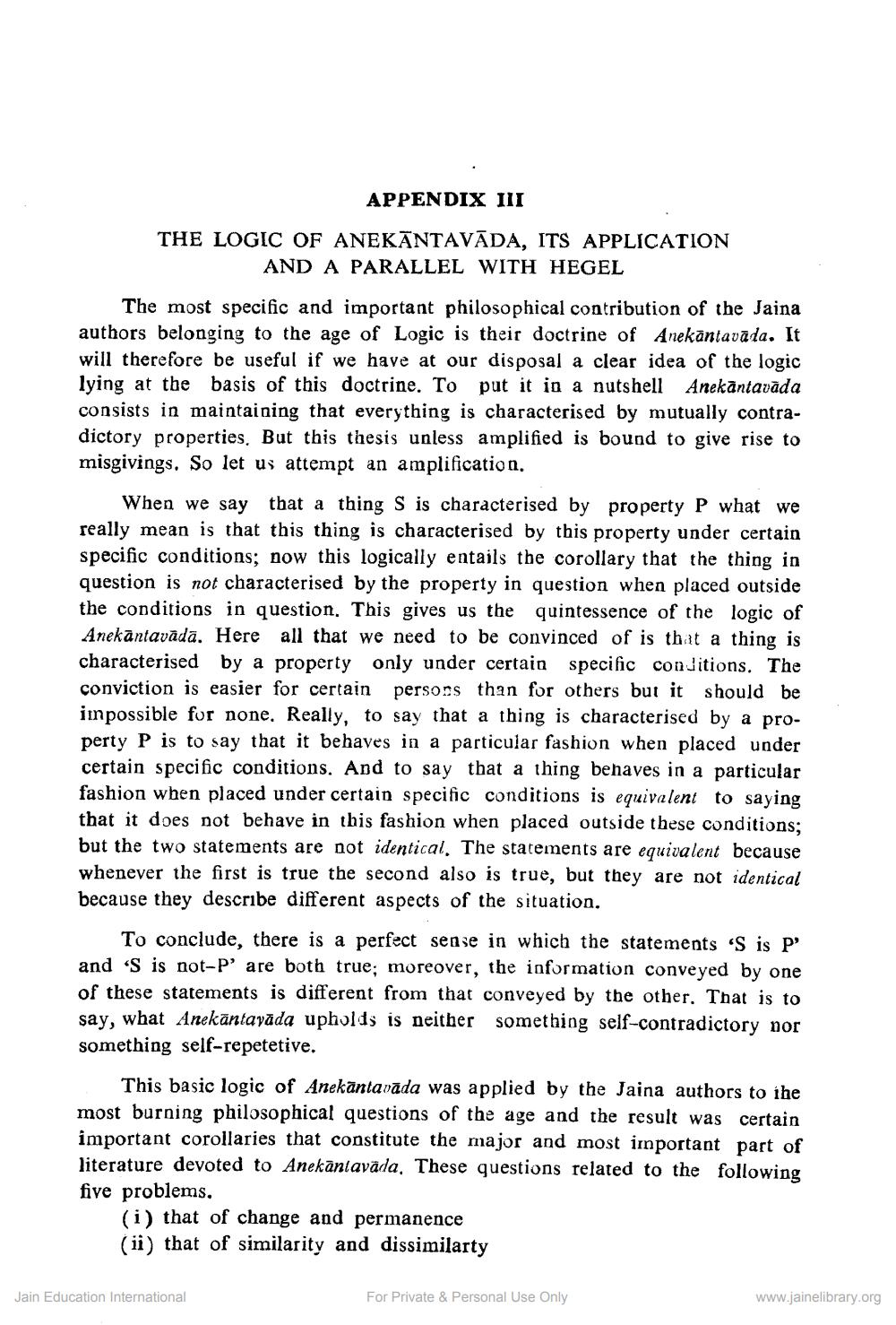________________
APPENDIX III THE LOGIC OF ANEKĀNTAVĀDA, ITS APPLICATION
AND A PARALLEL WITH HEGEL The most specific and important philosophical contribution of the Jaina authors belonging to the age of Logic is their doctrine of Anekantavada. It will therefore be useful if we have at our disposal a clear idea of the logic lying at the basis of this doctrine. To put it in a nutshell Anekāntavāda consists in maintaining that everything is characterised by mutually contradictory properties. But this thesis unless amplified is bound to give rise to misgivings. So let us attempt an amplification.
When we say that a thing S is characterised by property P what we really mean is that this thing is characterised by this property under certain specific conditions; now this logically entails the corollary that the thing in question is not characterised by the property in question when placed outside the conditions in question. This gives us the quintessence of the logic of Anekāntavāda. Here all that we need to be convinced of is that a thing is characterised by a property only under certain specific conditions. The conviction is easier for certain persons than for others but it should be impossible for none. Really, to say that a thing is characterised by a property P is to say that it behaves in a particular fashion when placed under certain specific conditions. And to say that a thing behaves in a particular fashion when placed under certain specific conditions is equivalent to saying that it does not behave in this fashion when placed outside these conditions; but the two statements are not identical. The statements are equivalent because whenever the first is true the second also is true, but they are not identical because they describe different aspects of the situation.
To conclude, there is a perfect sense in which the statements 'S is P' and 'S is not-P are both true; moreover, the information conveyed by one of these statements is different from that conveyed by the other. That is to say, what Anekāntayāda upholds is neither something self-contradictory nor something self-repetetive.
This basic logic of Anekantavada was applied by the Jaina authors to ihe most burning philosophical questions of the age and the result was certain important corollaries that constitute the major and most important part of literature devoted to Anekanlavada. These questions related to the following five problems,
(i) that of change and permanence (ii) that of similarity and dissimilarty
Jain Education International
For Private & Personal Use Only
www.jainelibrary.org




